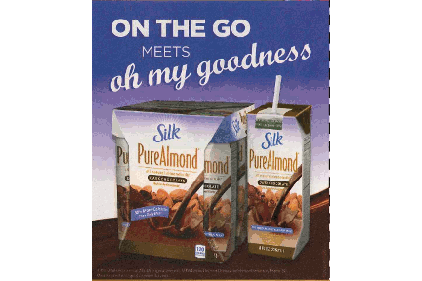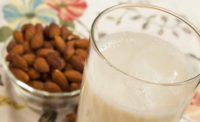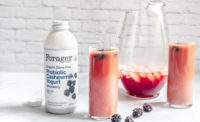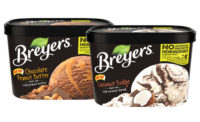By Innova Market Insights
 While dairy alternative drinks accounted for a relatively limited share of 5% of the total dairy launches recorded by Innova Market Insights in the 12 months to the end of October 2012, the market has seen considerable recent development. This is being fueled by its increasing popularity in the West, where it is moving out of the specialist heath food arena and into the mainstream.
While dairy alternative drinks accounted for a relatively limited share of 5% of the total dairy launches recorded by Innova Market Insights in the 12 months to the end of October 2012, the market has seen considerable recent development. This is being fueled by its increasing popularity in the West, where it is moving out of the specialist heath food arena and into the mainstream.
Soy milks traditionally dominate the sector and still featured in 78% of dairy alternative drinks launches, either as a main or secondary ingredient. But there has been rising interest in the use of other plant-based alternatives, including cereals, such as rice, oats and barley, and nuts, such as almonds, hazelnuts and walnuts. Rice was the second most popular ingredients after soy, but at a considerable distance, featuring in 17% of introductions. This is ahead of oats in 11% and almonds in 10%.
Almond milks, already highlighted as a sector to watch by Innova Market Insights back in early 2011, have continued to grow in popularity. Their share of global launches has reached its present level of 10% from just 3% in 2005. Following the flurry of activity in almond milks in the United States in 2010 and 2011, a rise in interest was recorded in Europe, particularly the U.K., in 2012. Former soy specialist Alpro is extending into the nut milks market with almond and hazelnut milks early in the year, closely followed by Kallo developing its Dream range of milk alternatives with Almond Dream, and then the mid-year arrival of U.S. almond company Blue Diamond’s Almond Breeze range.
As well as single-source milk alternatives, there has been a rising use of blends, such as soy and rice, or multi-grain options. The move towards the combination of different nondairy ingredient sources has been developing in recent years, and again the US has been leading the way. 2012 saw the extension of Hain Celestial’s Dream dairy-free brand with Dream Blends, marketed as the “next generation of nondairy beverages” and featuring a combination of almonds, cashews and hazelnuts.
Dairy alternative drinks have traditionally been marketed on a health platform and this has continued, with three-quarters of launches recorded by Innova Market Insights featuring a health claim of some kind. The most popular positionings relate to lactose-free formulations, the use of organic ingredients, a low-cholesterol content and an additive- and preservative-free “clean-label” image. Over 35% of global introductions featured lactose-free labeling, rising to over 50% in North America and Europe.
Within the “active” health or fortified arena, the use of added vitamins and minerals, particularly calcium, was the most commonly used claim. Heart health claims, once frequently used to market soy milk, particularly in the United States, are no longer so much in evidence. This reflects regulatory concerns over claims, as well as disputes over their validity. About 6.5% of launches featured heart health claims in the 12 months to the end of October 2012, which was lower than the level of claims for digestive and gut health, at 7.5%.
Lu Ann Williams, Head of Research at Innova Market Insights, reports that, while nondairy milk alternatives are still a relatively small market overall outside Asia, purchase levels are rising rapidly in some countries. This reflects the growing awareness of allergy and intolerance issues and the low fat, low calorie and cholesterol-free positioning of many of the products.
“Within the overall dairy alternative drinks sector, soy is facing some problems with regard to health scares and the result, in many instances, has been a move to other, non-soy plant-based alternatives. This trend seems set to continue with an increasing variety of products being made available,” she said.



